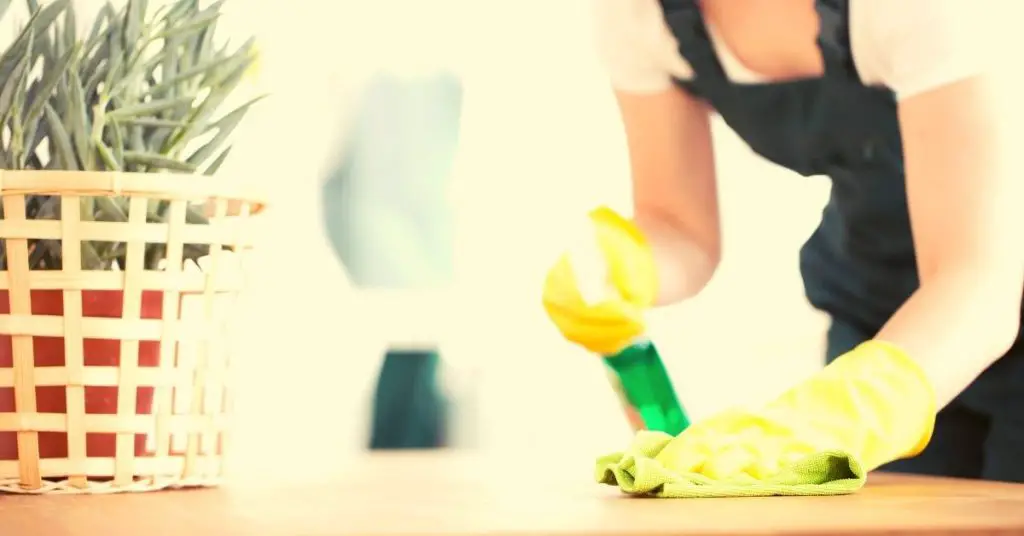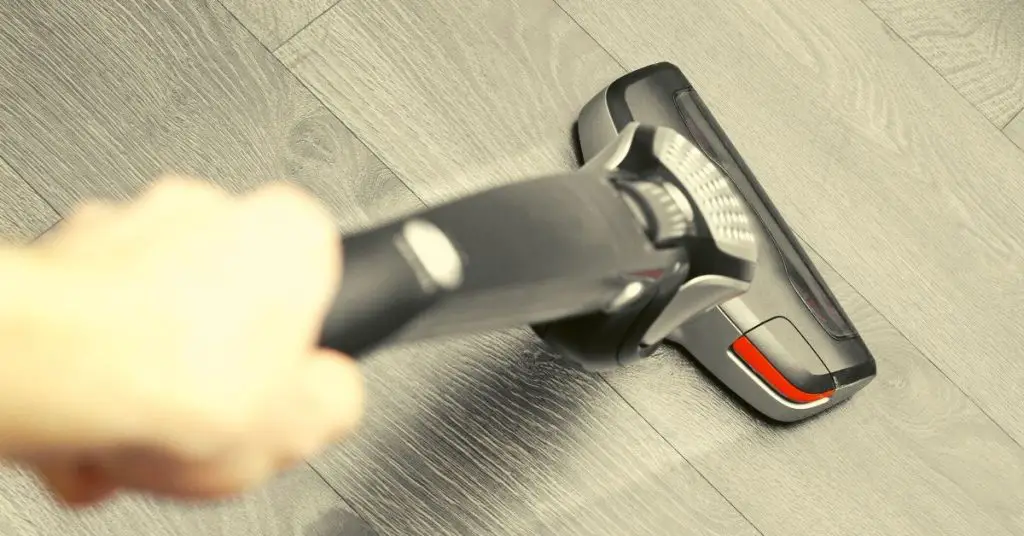Hoovering Or Dusting First?
Have you ever found yourself wondering, “If I vacuum first then I might disturb the dust on the surfaces and get it in the air, but if I dust first then the stirred-up vacuum dust might land again…” Us too, so we decided to answer the ‘should I hoover or dust first’ question once and for all!
The order you should clean in comes down to a lot of factors, the main one being personal preference.
But if somebody in your household has allergies or health concerns then, of course, you’ll want to use optimum cleaning methods.
This article will cover which order to clean in, where dust comes from, how to reduce dust and how often to clean.
We’ve based our findings on a combination of expert health and general public opinions.
So let’s find out the answer to the all-important question: should you hoover or dust first?
Should You Hoover or dust first?
The most effective order of cleaning is that you should dust first and then hoover.
Vacuuming does kick up some dust, but not as much as dusting does (weirdly). Dusting causes everything on surfaces to fall on the floor, so hoovering before would miss this extra mess.
Although the order you clean it won’t make a hugely noticeable difference, for people sensitive to dust hoovering last is the safer choice.

Cleaning surfaces with ‘wet’ dusting and using a microfibre cloth helps improve how much dust can be caught. by spraying surfaces with a polish first and then wiping up the dirt.
Where does dust come from in a house?
60% of indoor dust comes from outdoors, resulting in a high pollen percentage in our households. Hayfever sufferers never catch a break, do they?!
Alongside the outdoor particles, dust also comes from pets, fabrics, hair, general dirt and bacteria, and a small proportion of dead skin.
Dryer machines also produce a heck of a lot of dust, so if dust is a real issue then try keeping your dryer away from commonly used areas.
The settling of dust is unavoidable, as it’s made up of invisible airborne particles that will have to land somewhere eventually.
Although there will always be some dust settling, there are ways to decrease the amounts you’ll be subject to.
How to reduce dust build-up
If household dust has an impact on your house then these steps might help.
Reduce Dust By The amounts of carpet and fabrics
Fabrics produce tiny fibres that become airborne and end up landing as dust. Carpets do too, but the main issue is they retain dust that gets kicked up when walked on.
Instead, opt for hardwood floors, and blinds instead of curtains, that can be easily cleaned to a higher standard.
Watch how much dust and dirt comes out of this rug!
Keep windows closed
Since 60% of dust is from outdoors, made up of pollutants, dirt and pollen, keeping windows closed can massively improve levels inside the home. However, this isn’t a realistic option for most people.
Invest in air purifiers
Air purifiers aim to reduce the amounts of particles in your home, including from animals, pollen and pollutants.
This highly-rated LEVOIT Air Purifier improves health and sleep by reducing dust, mould, pollen, pet dust and hair, as well as odours like smoke. It also works as a nightlight!
Keep floors and surfaces as clean as possible
Keeping floors and surfaces free from dirt will reduce the amount that becomes airborne again from movement. This is much easier with hardwood floors as you can tell straight away when they need a clean.
Cleaning top to bottom in your home ensures dust falls to the floor so vacuuming and mopping will catch all the last traces.
Regularly wash bedding and vacuum curtains
Sheets and pillows are hotbeds (pun intended) for collecting dust and dust mites. Wash bedding regularly to stop dust mites breeding and seize the build-up of dirt.
Curtains will retain dust in their fibres so vacuuming and steaming with a handheld device will keep the particles at bay. Blinds are an even better solution as they can be wiped down as soon as dust is visible.
This handheld, portable vacuum makes quickly sucking up dust easy. Just keep it charged and ready to go.
Don’t allow pets inside the home
Unfortunately, our furry friends are a big contributor to allergies and household dust.
Although people can grow out of their allergies from exposure to animals, it’s best just to avoid allowing them inside.
Keep tumble dryer clean and behind a closed door
Dryer machines produce a ton of dust and lint fibres. Avoid these spreading around your house by keeping your dryer in a small room or closet, or at least away from where you sleep and spend the most time.
Using a handheld vacuum makes regularly cleaning the area fast and easy.
Invest in ceiling height storage with no room for dust
Dust and grime builds up in areas we can’t reach and see, which makes cleaning them much less of a priority. For people with health conditions related to dust, this can be a hidden problem that can affect their breathing.
To avoid this, install cabinets and cupboards at ceiling height with no room for dust to settle.
Alternatively, keep everything lower so it’s easier to see when the dust is building up, and to clean it when it does.
How often should you dust and Hoover?
For allergy sufferers, a deep dusting might be required every one to two weeks. This includes less noticeable areas like door frames, high-up shelving and window frames.
Consider monitoring your health effects with different frequencies of cleaning to find what works best for you. However, dust levels change seasonally so factor in higher pollen counts when choosing how much to dust.

Hoovering carpets and hard floors twice a week reduces dust and keeps your home cleaner in general. Higher traffic areas like kitchen floors should be vacuumed more often or whenever needed.
Vacuuming can seem like a big job that gets put off, but it never takes as long as we think. To make the job easier, leave your vacuum cleaner plugged in and the wire unravelled so you just have to turn it on and whizz around.
If you’re looking to buy a new hoover, we 100% suggest a cordless one to make cleaning more efficient.
Their batteries don’t last forever but generally enough to do an average-sized house.
The Gtech AirRam isn’t the cheapest model, but its cleaning power and detachable base make it well worth it. Cleaning stairs without lugging around a heavy hoover and getting tangled in a wire? We’re sold.
Summary of Whether You Should Hoover or Dust First
If you’ve only had time to skim this post, then the key takeaway should be that the answer to the question ‘Should I hoover or dust first’ is dust then vacuum.
Dust is inevitable but can be controlled by making a few changes to your home and increasing cleaning frequency.
There are no hard-set rules for cleaning homes. Most of us can get by with cleaning when something needs a good clean, and when we’ve got the time, and that’s absolutely okay!
Related Cleaning Articles:
- Best Vacuum Cleaner Under £200 UK
- My House Is Messy, Where Do I Start?
- How Often Should You Change Your Sheets And Why
- What Is A Cleaning Schedule And How To Make One
- How To Use Bicarbonate Of Soda For Cleaning
- What To Do When You Can’t Keep On Top Of Housework
- How To Tidy Your Room Quickly And Efficiently

